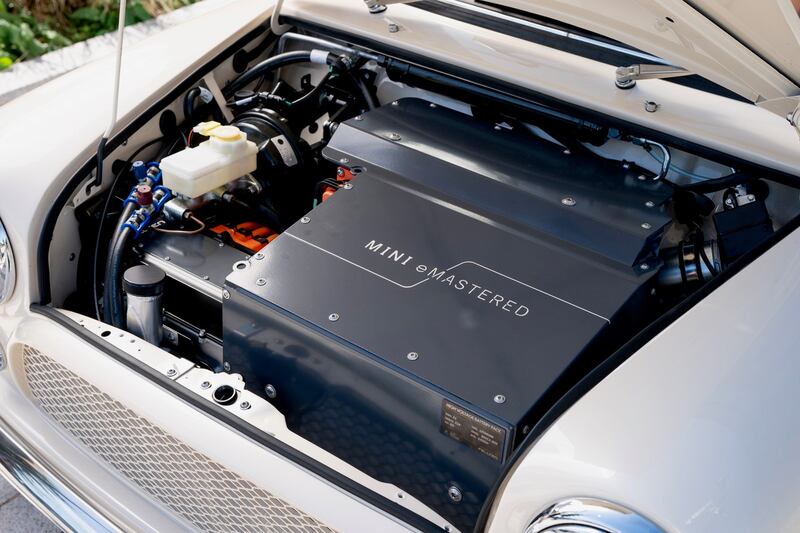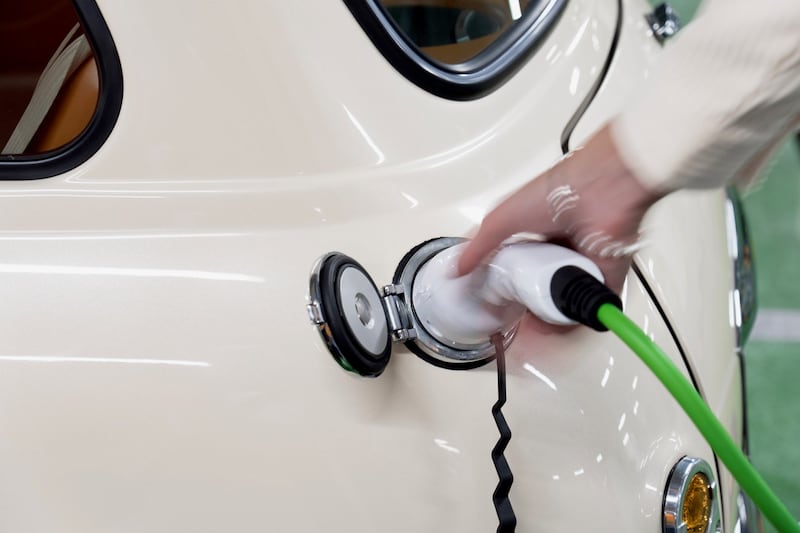It’s abundantly clear that anyone signing up to a company car scheme in the next couple of years would be mad to user-choose anything other than an electric vehicle. After all, the combo of an extra €10,000 off the value of the car and the inherently low benefit-in-kind (BIK) rates afforded to electric cars make it a complete no-brainer.
Could we go a step further, though? After all, for many higher-flyers the amount knocked off the value of a new electric vehicle (EV) for BIK purposes – €45,000 – runs out pretty quickly. You’d think this would be enough of a subvention for most cars to effectively be zero rate but even a humble mid-spec electric Volkswagen overshoots that figure by several thousand euro – and don’t forget that the subventions are on a sliding scale and will reduce to a maximum of €10,000 by 2026.
So, what about a classic car? Could you score a double-whammy benefit by going for a classic which is also electric? According to Revenue’s rules: “[The] Taxes Consolidation Act (TCA) 1997 provides that where, by reason of employment, any car is made available, without a transfer of ownership, to an employee, a benefit-in-kind tax arises and the employer is required to deduct tax on the charge to BIK under the PAYE system.
“Since January 1st, 2023, the amount taxable as a BIK is determined by the car’s original market value, the annual business kilometres driven and the CO2 emissions category of the car. The business mileage and the emissions category determine whether a standard, discounted or surcharged rate applies. The BIK rates range from nine per cent to 37.5 per cent.”
RM Block
The crucial phrase here is the original market value because the BIK you pay for using a company-provided car will always and ever be based on the original price paid for that car. In the case of, let’s say for argument’s sake, a brand new Mercedes-Benz C-Class, that value would be well over €70,000 once you’ve gone for a model with a bit of equipment.
If you were to pick a Benz of more than 30 years old, though, a car with vintage status but entirely sensible day-to-day usability, you’d be looking at an original purchase price of more like €20,000 – a considerable saving on your BIK monthly outgoings, even if you’re paying the highest rate.
What about converting said classic to electric power? Based near the famed Silverstone racetrack, David Brown Automotive has been making a steady business, since 2012, of offering upgraded classic cars. It started by turning tired, second-hand Jaguar XK coupes into stunning Speedback models which ape the look of an original Aston Martin DB5. Then it moved on to Minis.
The David Brown Mini Remastered range basically does to a Mini what Singer does to a Porsche but for about a tenth of the cost and in a package that’s much easier to park. So far the idea has been to take the original Mini with its original A-Series four-cylinder 1,275cc engine and make it more reliable, more powerful and more competent in modern-day conditions.

This Mini eMastered throws the A-Series away entirely. Instead, there’s a 72kW (that’s 97hp) electric motor, being fed power from an appropriately tiny 18.8kWh battery pack. There’s enough torque – 175Nm – in the Mini eMastered’s e-motor to shove it to 100km/h in 8.5 seconds, which is pretty competitive with an original hot-rod Mini Cooper S.
The range? A mere 175km, but then this is a car expressly designed for city driving. Indeed, no modern car is better at driving and parking, and manoeuvring in town than an original Mini.
And the price? A weighty £125,000 – but that original Mini would have had a list price, depending on the year of the car you’re converting, of anything from a few hundred euro (or the Irish pound equivalent, of course) to about €13,500 in the car’s final years of production.

Is there a genuine benefit in converting to electric? Well, yes, in the round. It’s better for the environment, obviously, and better for city-centre air pollution, not to mention that many cities will in the coming years be banning combustion-engine vehicles altogether. From a BIK perspective, though? Sadly not. The BIK bands are related to the car’s CO2 figures and, Revenue’s rules state, those figures are “per the manufacturer”.
That means that even though you may have converted to zero-emissions electric power the official figure for your car will be the one it left the factory with. And if there’s no figure – for many older cars, there simply isn’t a contemporary CO2 figure – then for BIK purposes you will automatically be paying the highest rate.
Still, even the highest rate of BIK doesn’t amount to much if you can prove that your gorgeous, electrified classic only cost €500 when it was new…


















